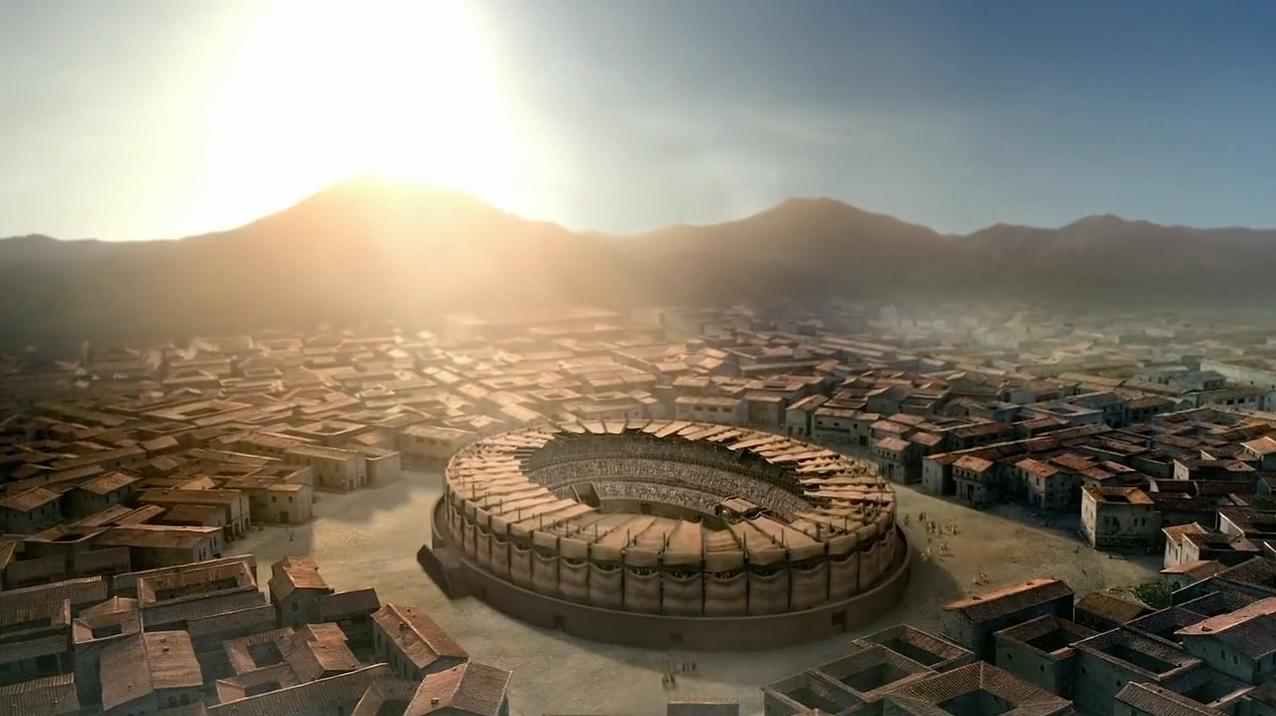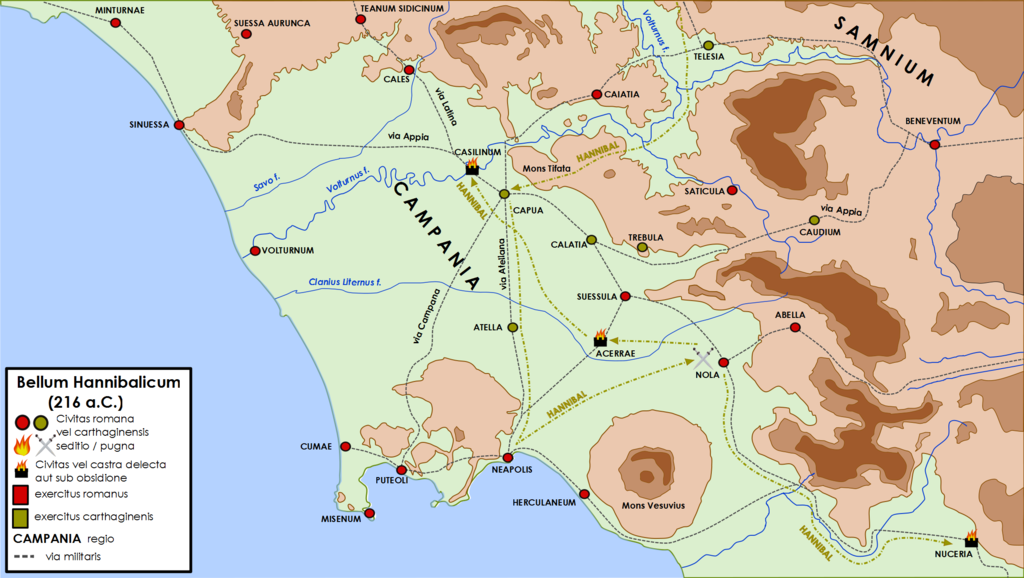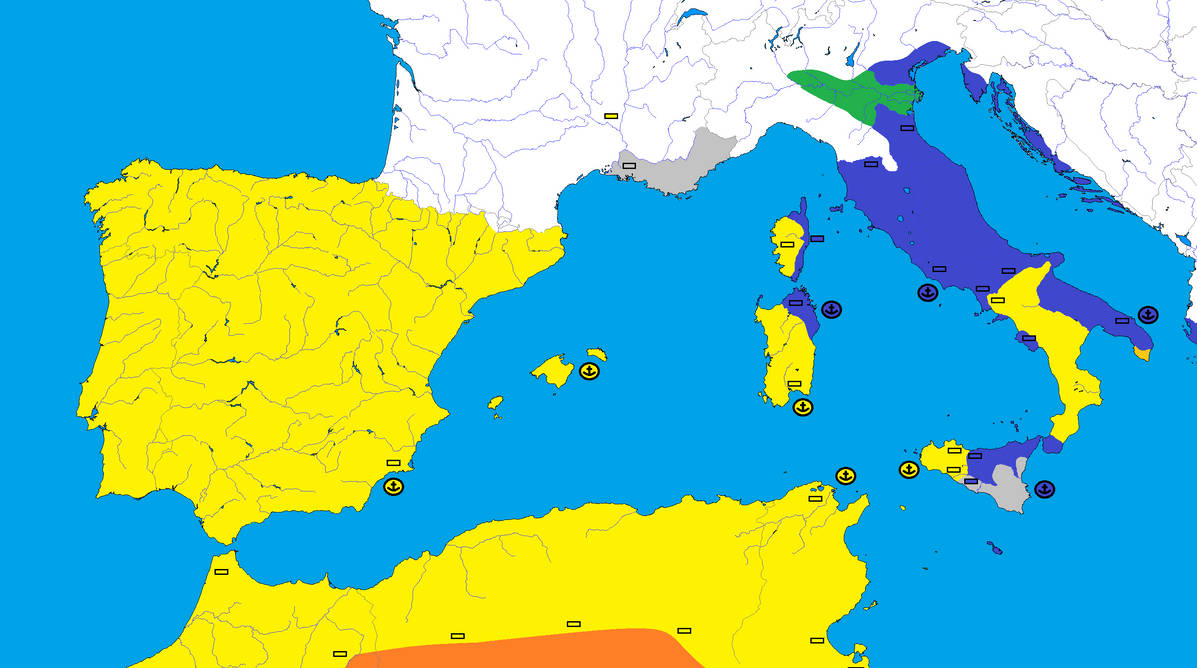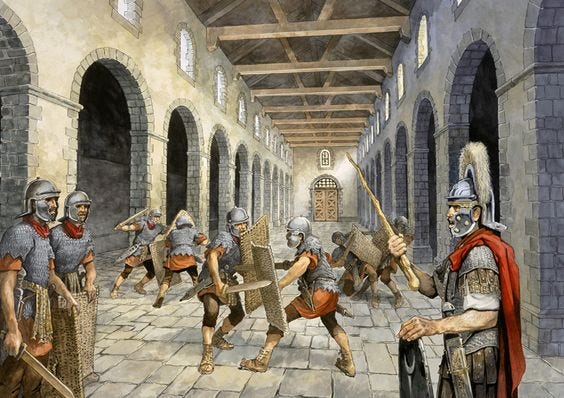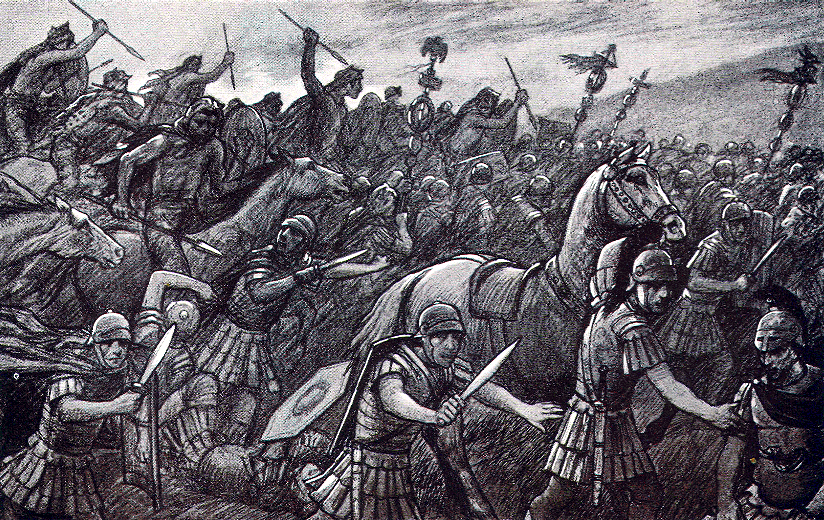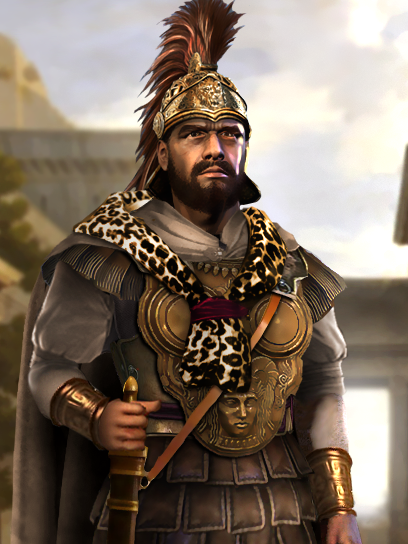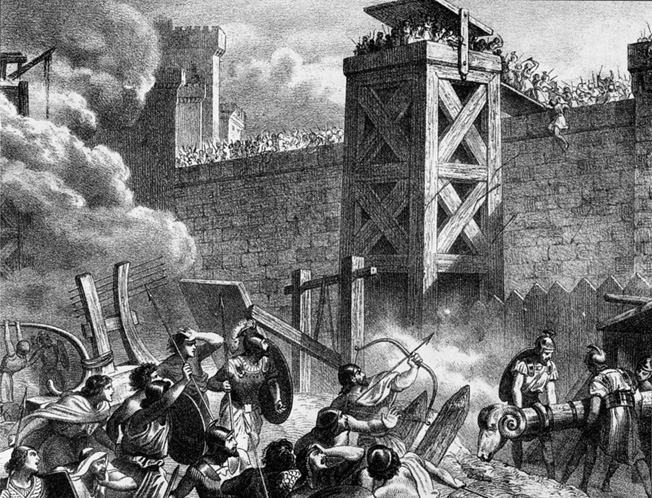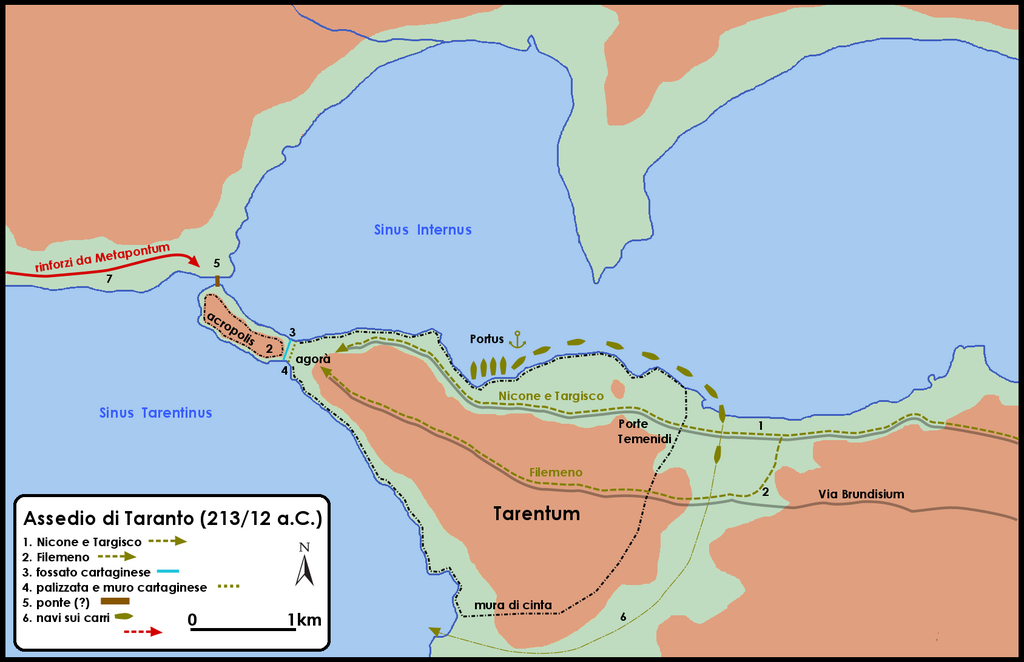Chapter 109: The Thracian Campaign/ Thracian War:
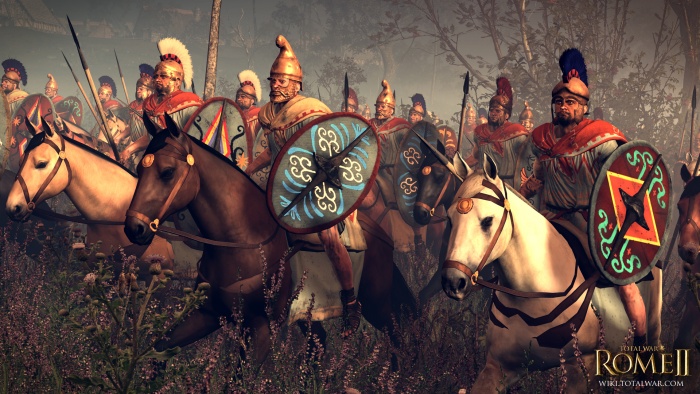
King (Basileus) Philip V of Macedonia had become the Hegemon of Greek and Hellas in the Hellas League shortly before Hannibal's victory at Cannae. And while he was concerned with the Roman Colonies on the western coast, like Apollonia and Epidamnus in Illyria, were he and his ally Epirus hoped to push the Romans back into the sea. Before that however, Phillip hoped he could pacify Thracia before in what he called the Thracian Strategy, similar to the strategy used by Philip II, the Father of Alexander the Great before. With southern Hellas finally under his dominance and after the Thracian Strategy also his eastern and northern flank secured he then could easily turn westwards against Rome and aid Hannibal in his war in Italy. However many things had changed since Philip II invaded Thrakia and with Greek influence and rule a own kingdom had established itself in the region. This so called Odrysian Kingdom (Ancient Greek: Βασίλειον Ὀδρυσῶν; Latin: Regnum Odrysium) was a state union of over 40 Thracian tribes and 22 kingdoms, that were only nominally under his tributary control. Philip V however wished to rule them directly and secure this flank against any uprising and break away from his rule, with more tighter control over former Thracia. Odrysian crafts and metalworking are largely a product of Persian influence. Thracians as Dacians and Illyrians all decorated themselves with status-enhancing tattoos. Thracian warfare was affected also by Celts and the Triballi had adopted Celtic equipment. Thracian clothing is regarded for its quality and texture and was made up of hemp, flax or wool. Their clothing resembled that of the Scythians including jackets with colored edges, pointed shoes and the Getai tribe were so similar to the Scythians that they were often confused with them. The nobility and some soldiers wore caps. There was a mutual influence between the Greeks and the Thracians. Greek customs and fashions contributed to the recasting of Thracian society. Among the nobility Greek fashions in dress, ornament and military equipment were popular. But unlike the Greeks, the Thracians often wore trousers. Thracian kings were subjected to Hellenization, ever since Phillip II conquered the region for Macedon.
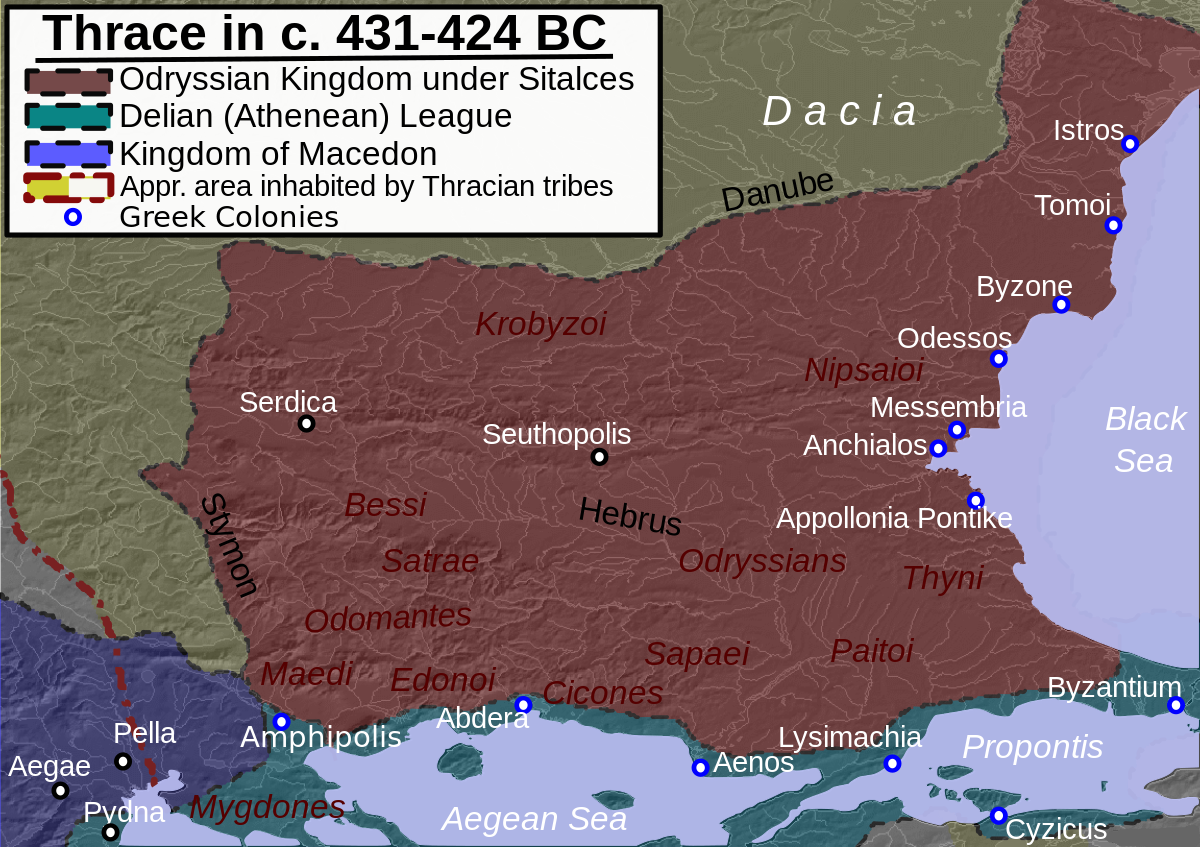
This changes in Thracia meant that Philip V would have a much harder task then Philip II before. The Macedon King Philip V knew that his opponent, the Odrysian King Pleuratus was capable of leading his armies against northern barbarians and local towns and cities who opposed him. As a result King Philip V of Macedon prepared his strategy wisely and established outpost, not only along the Thracian border, but also along some trade routes in Thracia itself. But instead of just being trade posts, Philip used them as smal forward watchtowers, garrison posts and supply bases for his marching army. This way the Macedon Army managed to invade the Odrysian Kingdom from three positions at the same time, one along the coast, one along the Hebrus river and one marching north to the Danube to secure that flank against Dacian barbarians. The Odrysian tribes of Bessi, Satrae, Odomantes, Maedi, Edonoi, Ciconex, Sapaei and the cities of Serdica and Seuthopolis quickly fell to the Macedon forces under Philip V. Along the east coastand the north however, the tribes of Thyni, Paitoi, Nipsaioi and Krobyzoi, together with the cities of Appollonia Pontike, Anchialos, Messembria, Odessos, Byzone, Tomoi and Istros put up a much harder resistance and defence. At the same time Dacian tribes raided the northern Odrysian Kingdom alongside other tribes and pirats from the Póntos Áxeinos (Black Sea) who believed that the Macedonian invasion had weakened the Odrysians enough, so that they too could conquer parts of it or raid the cities along it's coast and rivers. This meant that beside heavy Odrysian resistance, even after he defeated their main Army at the Crossing of the Hebrus Battle, Philip still had to lay siege on the eastern cities, while at the same time fighting the Dacian and Scythian and Bosporan Kingdom raiders at the northern border and the eastern coast. Phillip V remained victorious and transformed the Odrysian Kingdom into the Thracian Province (ἐπαρχία Θρᾳκῶν) of the Macedonian Empire once again.

King (Basileus) Philip V of Macedonia had become the Hegemon of Greek and Hellas in the Hellas League shortly before Hannibal's victory at Cannae. And while he was concerned with the Roman Colonies on the western coast, like Apollonia and Epidamnus in Illyria, were he and his ally Epirus hoped to push the Romans back into the sea. Before that however, Phillip hoped he could pacify Thracia before in what he called the Thracian Strategy, similar to the strategy used by Philip II, the Father of Alexander the Great before. With southern Hellas finally under his dominance and after the Thracian Strategy also his eastern and northern flank secured he then could easily turn westwards against Rome and aid Hannibal in his war in Italy. However many things had changed since Philip II invaded Thrakia and with Greek influence and rule a own kingdom had established itself in the region. This so called Odrysian Kingdom (Ancient Greek: Βασίλειον Ὀδρυσῶν; Latin: Regnum Odrysium) was a state union of over 40 Thracian tribes and 22 kingdoms, that were only nominally under his tributary control. Philip V however wished to rule them directly and secure this flank against any uprising and break away from his rule, with more tighter control over former Thracia. Odrysian crafts and metalworking are largely a product of Persian influence. Thracians as Dacians and Illyrians all decorated themselves with status-enhancing tattoos. Thracian warfare was affected also by Celts and the Triballi had adopted Celtic equipment. Thracian clothing is regarded for its quality and texture and was made up of hemp, flax or wool. Their clothing resembled that of the Scythians including jackets with colored edges, pointed shoes and the Getai tribe were so similar to the Scythians that they were often confused with them. The nobility and some soldiers wore caps. There was a mutual influence between the Greeks and the Thracians. Greek customs and fashions contributed to the recasting of Thracian society. Among the nobility Greek fashions in dress, ornament and military equipment were popular. But unlike the Greeks, the Thracians often wore trousers. Thracian kings were subjected to Hellenization, ever since Phillip II conquered the region for Macedon.

This changes in Thracia meant that Philip V would have a much harder task then Philip II before. The Macedon King Philip V knew that his opponent, the Odrysian King Pleuratus was capable of leading his armies against northern barbarians and local towns and cities who opposed him. As a result King Philip V of Macedon prepared his strategy wisely and established outpost, not only along the Thracian border, but also along some trade routes in Thracia itself. But instead of just being trade posts, Philip used them as smal forward watchtowers, garrison posts and supply bases for his marching army. This way the Macedon Army managed to invade the Odrysian Kingdom from three positions at the same time, one along the coast, one along the Hebrus river and one marching north to the Danube to secure that flank against Dacian barbarians. The Odrysian tribes of Bessi, Satrae, Odomantes, Maedi, Edonoi, Ciconex, Sapaei and the cities of Serdica and Seuthopolis quickly fell to the Macedon forces under Philip V. Along the east coastand the north however, the tribes of Thyni, Paitoi, Nipsaioi and Krobyzoi, together with the cities of Appollonia Pontike, Anchialos, Messembria, Odessos, Byzone, Tomoi and Istros put up a much harder resistance and defence. At the same time Dacian tribes raided the northern Odrysian Kingdom alongside other tribes and pirats from the Póntos Áxeinos (Black Sea) who believed that the Macedonian invasion had weakened the Odrysians enough, so that they too could conquer parts of it or raid the cities along it's coast and rivers. This meant that beside heavy Odrysian resistance, even after he defeated their main Army at the Crossing of the Hebrus Battle, Philip still had to lay siege on the eastern cities, while at the same time fighting the Dacian and Scythian and Bosporan Kingdom raiders at the northern border and the eastern coast. Phillip V remained victorious and transformed the Odrysian Kingdom into the Thracian Province (ἐπαρχία Θρᾳκῶν) of the Macedonian Empire once again.
Last edited:
